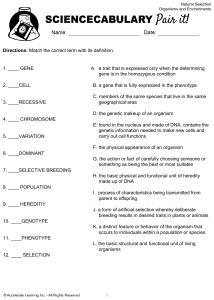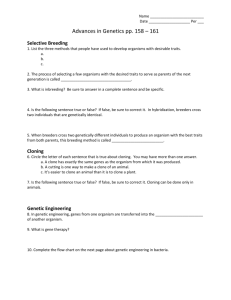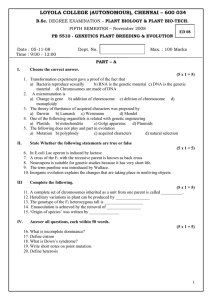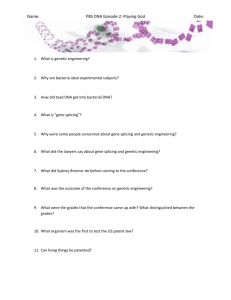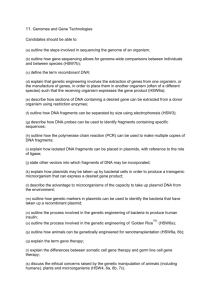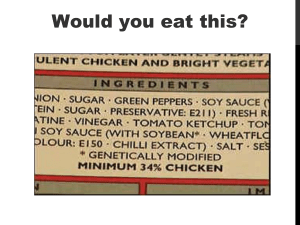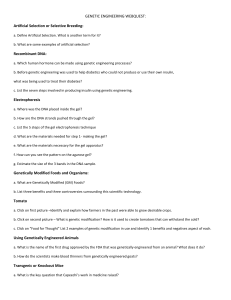Genetic engineering
advertisement
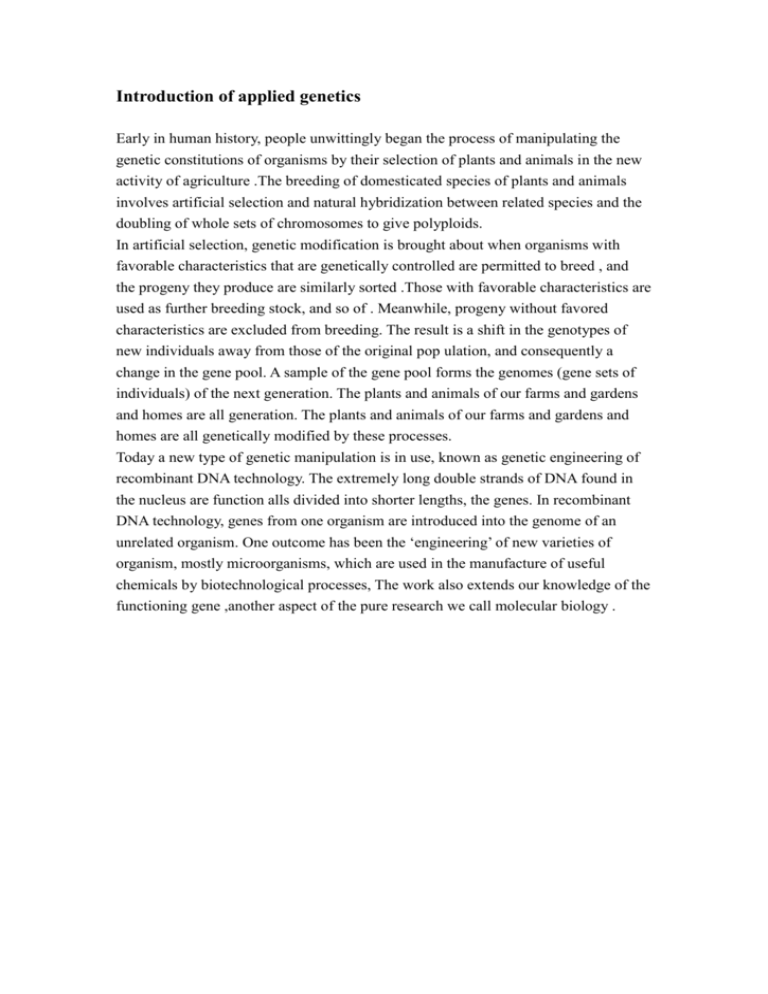
Introduction of applied genetics Early in human history, people unwittingly began the process of manipulating the genetic constitutions of organisms by their selection of plants and animals in the new activity of agriculture .The breeding of domesticated species of plants and animals involves artificial selection and natural hybridization between related species and the doubling of whole sets of chromosomes to give polyploids. In artificial selection, genetic modification is brought about when organisms with favorable characteristics that are genetically controlled are permitted to breed , and the progeny they produce are similarly sorted .Those with favorable characteristics are used as further breeding stock, and so of . Meanwhile, progeny without favored characteristics are excluded from breeding. The result is a shift in the genotypes of new individuals away from those of the original pop ulation, and consequently a change in the gene pool. A sample of the gene pool forms the genomes (gene sets of individuals) of the next generation. The plants and animals of our farms and gardens and homes are all generation. The plants and animals of our farms and gardens and homes are all genetically modified by these processes. Today a new type of genetic manipulation is in use, known as genetic engineering of recombinant DNA technology. The extremely long double strands of DNA found in the nucleus are function alls divided into shorter lengths, the genes. In recombinant DNA technology, genes from one organism are introduced into the genome of an unrelated organism. One outcome has been the ‘engineering’ of new varieties of organism, mostly microorganisms, which are used in the manufacture of useful chemicals by biotechnological processes, The work also extends our knowledge of the functioning gene ,another aspect of the pure research we call molecular biology .
